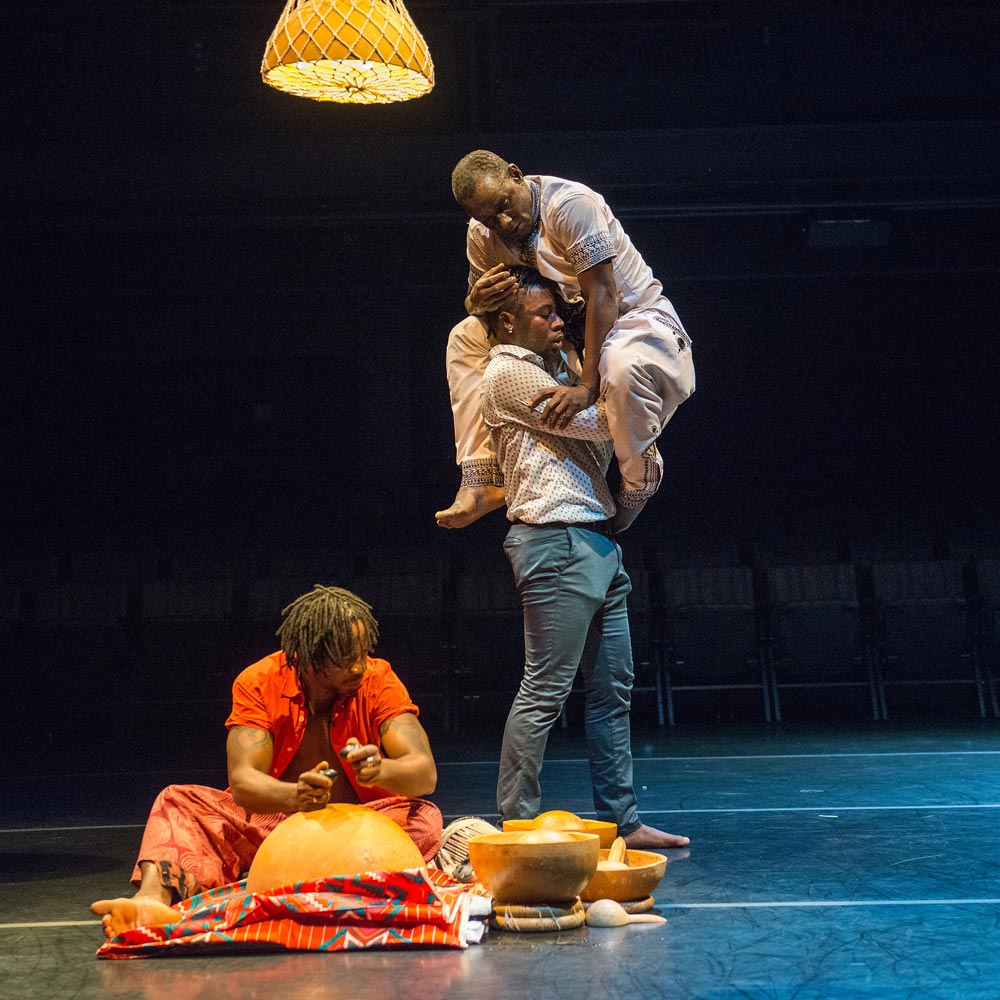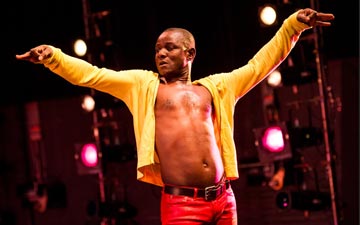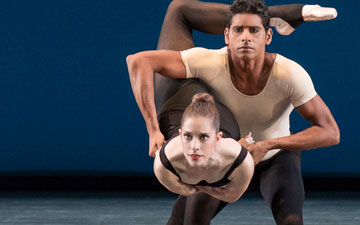
© Stephanie Berger. (Click image for larger version)
Souleymane Badolo
Yimbégré
New York, Brooklyn Academy of Music
2 December 2015
Souleymane Badolo on Facebook
www.bam.org
Men at Work
What constitutes an African dance? What meaning lies behind the steps? Souleymane Badolo, born and trained in Burkina Faso and a resident of Brooklyn since 2009, has been exploring this question for years, weaving together myth and memory, ritual and pure, rhythmically-elaborate movement into intimate evenings of dance. Yimbégré, a trio being performed at the BAM Fisher this week, is his latest.
Much is lost in translation, and that is part of the point, it seems. The title isn’t translated, though Badolo has said in interviews that it means “beginning” in the Mooré language. As he writes in a program note, there are things non-Africans have trouble understanding; that is a given. Dance, like language, is not transparent.

© Stephanie Berger. (Click image for larger version)
However, what we can understand is the skill, subtlety, and musicality embodied by the three performers: Badolo himself, the dancer Sylvestre Koffitse Akakpo-Adzaku (from Togo), and the musician Mamoudou Konate (also from Burkina Faso). Konate is a wizard of sound, capable of teasing out rhythms of dazzling complexity from the small collection of instruments with which he surrounds himself, consisting mainly of gourds – some filled with water – and drums. A tip of the gourd creates a new color, now hollow, now dry. He splashes water with the tips of his fingers or decants it, melodiously, from one vessel to another. One could listen to his repertory of sounds for hours.
He sits at the center of the stage, as if binding the space together. Around him dance Akakpo-Adzaku and Badolo, at first far apart. The former is dressed in “Western” clothes – jeans and a button-down shirt. The latter, in a long embroidered tunic and loose trousers, an updated version of traditional West African garb. Gradually, the two enter into a kind of conversation with their bodies, performed with varying intensity and speed. Their dancing styles are notably different. Akakpo-Adzaku is light and fast, with quick footwork and sinuous hips. In contrast, Badolo is more captivating from the waist up. His back, often rounded, is a moving landscape. His shoulders dance, and his arms slice the air in wing-like arcs, fingers fluttering like feathers. Akakpo-Adzaku tends to look upward, with an impassive, cool gaze; Badolo often looks down, his face a mask of desolation.

© Stephanie Berger. (Click image for larger version)
The two slowly approach each other, until finally are very close, face to face. There is an intimacy between them that one doesn’t often see between men onstage. Usually it is Badolo who initiates contact, gently touching or lifting his partner. (Or jumping on his shoulders.) In a recurring theme, Badolo sashays across the space with exaggerated, vaguely effeminate movements of the hips and shoulders. His partner remains staunchly masculine; side by side, they are almost like man and woman. They embrace; Badolo fixes Akakpo-Adzaku’s collar. But the male-female theme is never developed – it’s not clear what Badolo is getting at. Yimbégré, like most of Badolo’s work, is fragmented and at times maddeningly opaque.
The audience is both invited in and kept at arms’ length. In a tongue-in-cheek passage, the three men argue about hot peppers in several languages: “je ne veux pas que tu manges piment rouge dans ma bouche,” Badolo says in French – I don’t want you to eat red pepper in my mouth. It’s a muddle of words and identities. The three men smile, and then dance together to an infectious song by the Tanzanian pop-star Diamond Platnumz. The rhythmic patterns of their feet gradually move upward through their bodies to their vocal chords until they engage in a complex call and response. This rhythmic virtuosity, one of the fundamentals of West African dance, requires no translation.

















You must be logged in to post a comment.